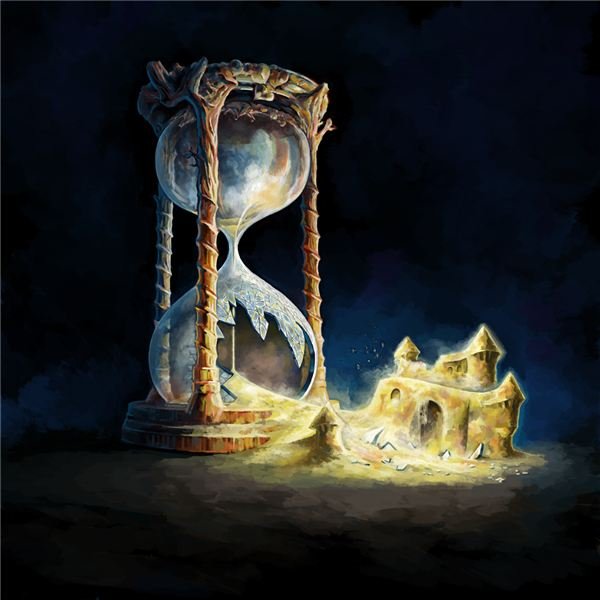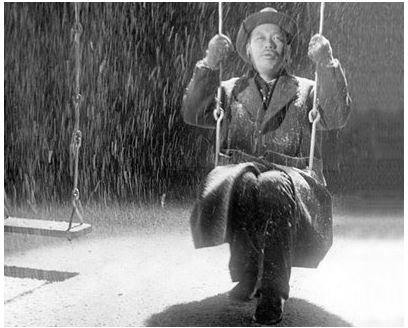Are Video Games A Form of Art?

Are Video Games Art?
Are video games a form of art? The age old question often doused in controversy and ill timed comments, Roger Ebert and Michael Thomsen (Citizen Prime) being two touted examples, is a hard nut to crack. In order to answer it effectively, we have to take a cross-section of other mediums and their output for comparisons sake, detailing whether they deserve to lay claim to the tag of artistry.
Easily the most widespread and popularist medium for entertainment or art comes from films. From the precipice atop which Citizen Kane sits to the doldrums of Miami Vice or The Village, films try to engage the audience through experience and by proxy. Seeing these characters and emotionally engaging in their actions, difficulties and triumphs, is part of what makes films great.
Empathising with Takeshi Shimura’s Watanabe in Ikiru, while he battles stomach cancer and decides for the betterment of everyone to build a children’s park before his death, provides an emotional pretext and engagement that could certainly be defined as art.
Video Games Art or Empowerment?
Unfortunately, at least with the advent of Hollywood blockbusters and general musculature in action movies, the throwaway popcorn genre displays an inherent lack of artistic inclination. Watching something akin to Universal Soldier for entertainment and “fun” can be compared with playing a video game for the same reasons.
Throwaway gaming is a stigmatism that almost all games have to face, due to an unabashed proclamation from game players who primarily play for fun and nothing else, forcing the hand of outside pundits or nay-sayers.
The key point in all this however is that it would be lunacy to claim Sylvester Stallone has produced art through experience and engagement in any of his Rambo series, whereas salient cynics critique the virtues of Gears of War as showcasing the puerile fascination with shooting and empowerment found in gaming, trying to compartmentalise the medium into nothing more than the equivalent of action films.
Often, this downplaying of the video game medium will come from people who either don’t play many games or have never looked outside of the most recent marketing campaign on television, whether thats Alpha Protocol or Red Dead Redemption.
Filmic Aesthetics As Opposed To Video Games Art
Much like modern cinema, art is found in games that don’t necessarily receive the highest praise or the biggest marketing push, finding themselves out of the argument through circumstance. The established nature of cinema gives a better platform to independent films or artistic experiences whereas the gaming industry, as of now, just isn’t ingrained in society enough to have this established recognition for independent development and video games art.
When a film such as Synecdoche, New York can be released in cinemas around the world it becomes clear that the medium of film has a wider berth than the current health of video games. Although that seems like a moderate truism, it is still worth noting.

There is an integral difference between filmic and gaming experiences that needs to be explained before we continue into focusing on an individual example. As stated above, films use a relatable experience and empathy structure to achieve their aesthetic principle, causing an exo-engagement with the person watching.
Video games on the other hand, require an end user to engage the represented action, with player characters becoming the cipher for that to occur. With this supposedly more personal interaction, games become a much more relativistic experience, even when playing a brainless shooter.
Imitation In Video Games
With this dependence on interaction, coupled with the already nascent immersive qualities of moving pictures, video games open a new tangent from which to mould or sculpt an original piece of art. The key word here is “original”, many games strive for contrived mechanics and various genre specific cliches, often losing sight of any artistic proclivities the game developers may have originally had.
Much like the aforementioned filmic medium, the majority of games end up as crude imitators of pioneering classics, take Darksiders and its tumult of Zelda influenced game mechanics as a pertinent and rather recent example.
Obviously when 95% of the medium strives and accepts this dirge of imitation, it becomes the standard, giving ammunition to critics of its puerile content. Fortunately there is still the 5% of games and developers that try something a bit different, have a certain je ne sais quoi or present unique interpretation of widely held concepts.
We have to cling to that small number, especially insofar as looking for original content and thinking, because larger companies tend to find ways to stamp out flair or creativity in favour of commercial interests.
Braid: An Example of Video Games Art
Taking Jonathan Blow’s Braid, an anomalous game of sorts given its widespread success for an independent title, its time to look at the question are video games art? The subjectivity of the question is merely born from the premise of relativism and the inherent difference between each persons experience with a game.

Braid is a great example of this, with a layered story either including a simple princess’ kidnapping or nuclear holocaust, the overall experience is very dependent on the individual and their input.
On the other hand, the game mechanics and how they express something within the narrative are not entirely relativistic, enforcing context to the actions of the players character.
As an example, the ability to rewind time and redo mistakes throughout the dream like levels could be akin to Tim (the main character, notice how its pretty close to the word time) and his regret over the events told in the ending. Trying to stamp out his mistakes and redo them in the gameplay reflects his lust for absolution and penance for his own grave errors.
Are Video Games A Form of Art?
Thus derives the basis of my argument or reasoning on the question are video games a form of art? It occurs when a video game uses its gameplay mechanics, instead of filmic storytelling, cutscenes or other cross-medium attributes, to express something through interpretation while contextualising its own narrative or reinforcing its own aesthetic qualities.

Often games can still be considered artful to a certain extent without using this trope to its fullest, see Metal Gear Solid and its unwieldy amount of filmic aspirations through cutscenes and codec conversations (also note the post-post modernist narrative in the second game), but the medium is one where video games art can properly exist only if the art is being derived from the mechanics and their expression or representation.
Now does that make Sleep Is Death, a tool for creating your own storyboards, video games art or a tool to create it? I guess we’ll save that for another article!
